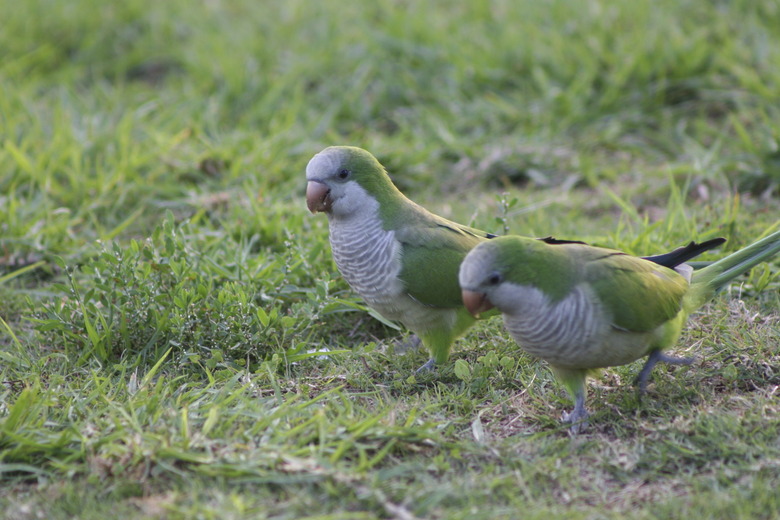Differences In Male & Female Quaker Parrots
Quaker parrots, also known as monk parrots, are small and hardy parrots native to South America. They're popular as pets in part because they are capable of learning many words and phrases. Visually, male and female Quaker parrots appear to be identical; unless you buy a parrot with papers that state the bird's sex, you will have to use the services of a vet or DNA-testing laboratory to determine the gender of your parrot.
Quaker Parrots Are Monomorphic
Quaker Parrots Are Monomorphic
Many parrot species have obvious differences between males and females. One sex is often smaller than the other, and often one gender has more colorful plumage than the other. These species are described as having dimorphic traits. Quaker parrots are monomorphic, which means they have no external visual traits that set the male and female Quakers apart. They can be the same color and size, so they require non-visual identification to determine gender.
Behavioral Traits Are Clues
Behavioral Traits Are Clues
Both male and female Quakers have the ability to talk and learn. In the wild, male Quakers bob their heads in mating dances when trying to attract mates. However, among Quaker parrots kept as pets, both males and females will sometimes bob their heads to attract attention from their owners — so head-bobbing is not an accurate way to tell their gender. When Quakers are kept in pairs, the female will often become more aggressive, so this can be a clue about gender, but not a definitive one.
Surgical Sexing Is Invasive
Surgical Sexing Is Invasive
Obviously, males and females have different reproductive organs, but knowing which bird has what requires surgical sexing. A vet will anesthetize the Quaker parrot and shave a small area of the abdomen. The vet will make an incision and pass an endoscope through it to inspect the parrot's reproductive organs. This was the most common method used before DNA testing was widely available. It can be stressful for the bird, and you must keep the incision clean afterward to prevent infection.
DNA Testing
DNA Testing
DNA testing, which requires a blood test or feather plucking, is a simple way to find out if a Quaker parrot is male or female. A vet can take a small blood sample from the leg of the bird and send it to a laboratory for testing. Other tests carried out on the same sample can check for diseases and malnutrition. Alternatively, you can pluck a few feathers and send them off to a DNA laboratory for testing, eliminating the visit to the vet. Feather plucking can cause irritation to your parrot and could possibly lead to infection.
